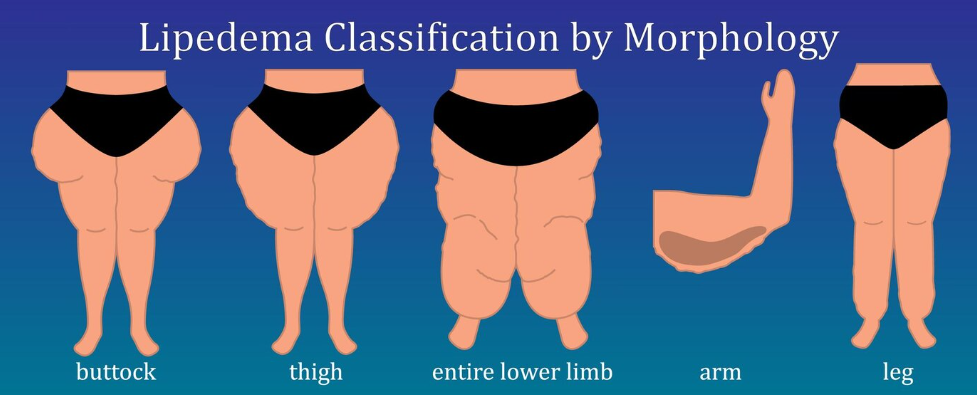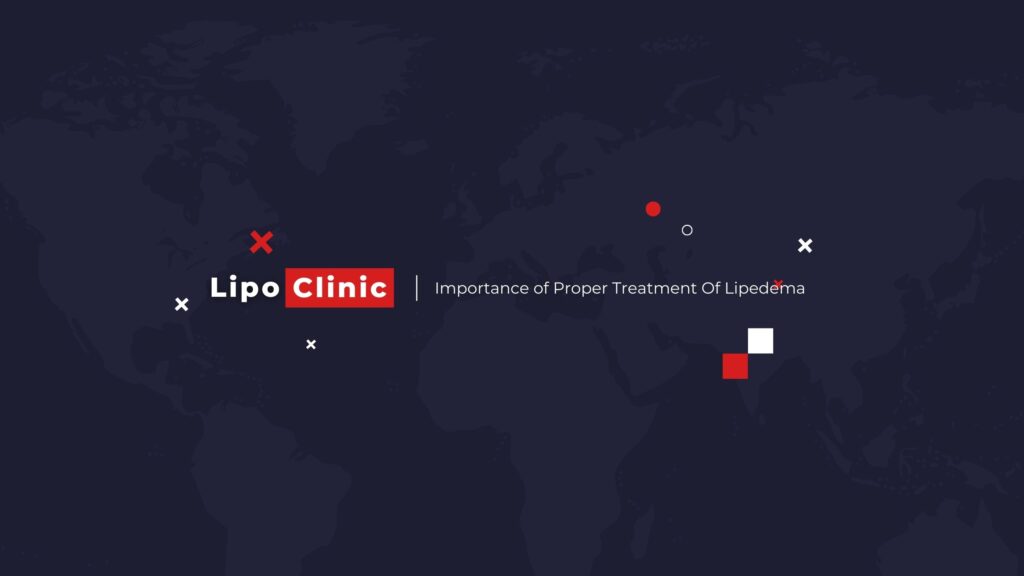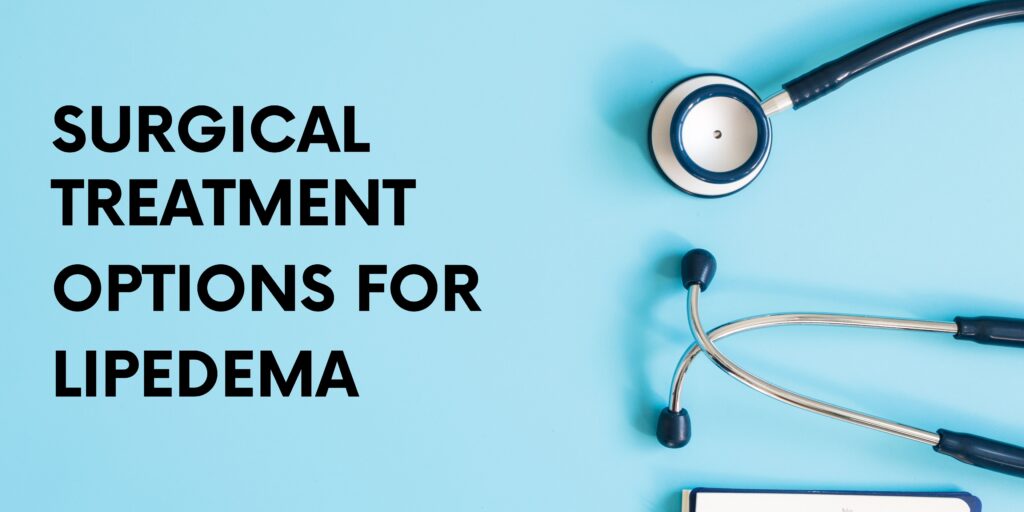I. What is Lipedema?
Lipedema is a condition that affects millions of people worldwide, yet it remains largely misunderstood and underdiagnosed. Lipedema is a chronic disorder characterized by the abnormal accumulation of fat tissue in specific areas of the body, most commonly the legs and sometimes the arms. This excess fat tissue is typically resistant to diet and exercise and can lead to pain, swelling, and impaired mobility.
According to some estimates, as many as 11% of women may have lipedema, but the actual prevalence of the condition is likely much higher, as it’s often misdiagnosed as obesity or lymphedema. Lipedema can affect people of any age, size, or weight, although it’s most commonly diagnosed in women during their reproductive years.
Proper treatment for lipedema is crucial to managing the symptoms and improving the patient’s quality of life. In this blog post, we’ll explore the different treatment options available for lipedema and why they’re so important. Lipoclinic has above 150 healthy customers so far.

II. Conservative Treatment Options
Conservative treatment options for lipedema can include measures such as compression therapy, manual lymphatic drainage, low-impact exercise, and a healthy diet. Compression therapy involves the use of compression garments or bandages to help reduce swelling and improve lymphatic flow. Manual lymphatic drainage is a type of massage therapy that can also help to improve lymphatic function and reduce swelling.
Low-impact exercise, such as swimming or cycling, can help to improve circulation and reduce pain and swelling in the affected areas. A healthy diet can also help to manage lipedema symptoms by reducing inflammation and promoting weight loss.
III. Surgical Treatment Options
In some cases, conservative measures alone may not be enough to manage lipedema symptoms. In these cases, surgical treatment options may be considered. The two main surgical options for lipedema treatment are liposuction and excisional surgery.
Liposuction involves the removal of excess fat tissue from the affected areas using a cannula and suction device. There are different types of liposuction techniques that can be used for lipedema treatment, such as tumescent liposuction, laser-assisted liposuction, and water-assisted liposuction. Vaser liposuction, which uses ultrasound technology to liquefy fat tissue before it’s removed, may also be a viable option for some patients.
Excisional surgery involves the removal of excess fat tissue and skin from the affected areas. This type of surgery may be necessary in cases where the excess fat tissue has caused significant skin laxity or where liposuction alone is not enough to achieve the desired results.

IV. Importance of Proper Treatment
Proper treatment for lipedema is crucial to managing the symptoms and improving the patient’s quality of life. Untreated lipedema can lead to a variety of complications, such as cellulitis, lymphedema, and joint problems. It can also have a significant impact on the patient’s mental health and self-esteem.
Furthermore, proper diagnosis and treatment of lipedema can also help to prevent misdiagnosis and mistreatment of the condition as obesity or lymphedema. It’s important for healthcare professionals to be aware of the signs and symptoms of lipedema and to provide patients with the proper diagnosis and treatment options.
Common symptoms of lipedema:
Fat accumulation in specific areas of the body
One of the hallmarks of lipedema is the abnormal accumulation of fat tissue in specific areas of the body. This fat tissue tends to accumulate in the lower body, such as the thighs, hips, and buttocks, and sometimes in the upper body, such as the arms. This fat tissue can feel soft and spongy to the touch and may be accompanied by an overall feeling of heaviness in the affected areas.
Swelling, tenderness, and pain
Lipedema can also cause swelling in the affected areas, which can be accompanied by tenderness and pain. This swelling can be aggravated by long periods of standing or sitting, as well as by changes in hormone levels, such as during menstruation or pregnancy. The swelling can make it difficult to find clothing that fits comfortably and can also cause skin irritation and infections.
Easy bruising and impaired mobility
People with lipedema may also experience easy bruising and impaired mobility. The skin in the affected areas can be delicate and easily damaged, leading to bruising or discoloration. The excess fat tissue can also make it difficult to move around comfortably, leading to impaired mobility and a reduced ability to participate in physical activities.
If you’re experiencing these symptoms, it’s important to seek medical advice from a healthcare professional who is knowledgeable about lipedema. Proper diagnosis and treatment can help to manage the symptoms and improve your quality of life.
III. Diagnosis of Lipedema
Lipedema is a condition that affects many people, but it can be challenging to diagnose. The diagnosis is typically made by a healthcare professional who is familiar with the condition and who has experience diagnosing and treating lipedema.
Here are some common methods used in the diagnosis of lipedema:
Physical examination and medical history
A healthcare professional will often begin the diagnostic process by performing a physical examination and taking a detailed medical history. They will examine the affected areas and look for signs of swelling, tenderness, and pain. They may also ask questions about your family history, lifestyle factors, and other health conditions.
Imaging tests (ultrasound, MRI, CT scan)
Imaging tests like ultrasound, MRI, or CT scan may be used to confirm the diagnosis of lipedema. These tests can help visualize the excess fat tissue in the affected areas and can also help rule out other conditions that may cause similar symptoms.
Differential diagnosis with other conditions (obesity, lymphedema, lipohypertrophy)
It’s important to differentiate lipedema from other conditions that may cause similar symptoms, such as obesity, lymphedema, or lipohypertrophy. A healthcare professional will consider these conditions in their diagnosis and may perform additional tests or evaluations to rule out these conditions.
IV. Causes of Lipedema
The causes of lipedema are not yet fully understood, but there are several factors that may contribute to the development of the condition. Here are some common causes of lipedema:
Genetic factors
Lipedema appears to have a genetic component, as it often runs in families. If you have a family history of lipedema, you may be more likely to develop the condition.
Hormonal changes (puberty, pregnancy, menopause)
Hormonal changes, such as those that occur during puberty, pregnancy, or menopause, may contribute to the development of lipedema. These changes can affect the way the body stores and distributes fat tissue.
Trauma or surgery
Trauma or surgery may also trigger the development of lipedema. This is thought to occur because the trauma or surgery can damage the lymphatic system or blood vessels, leading to the accumulation of excess fat tissue.
Lifestyle factors (diet, exercise, stress)
Finally, lifestyle factors like diet, exercise, and stress may also play a role in the development of lipedema. Poor diet and lack of exercise can contribute to weight gain and fat accumulation, while stress may trigger hormonal changes that can affect fat storage.
V. Conservative Treatment Options
Conservative treatment options for lipedema aim to manage the symptoms of the condition and prevent further progression. Here are some common conservative treatment options:
Compression therapy
Compression therapy involves the use of bandages, stockings, or sleeves to apply pressure to the affected areas. This can help reduce swelling and improve circulation, leading to decreased pain and discomfort.
Manual lymphatic drainage
Manual lymphatic drainage is a gentle massage technique that can help improve lymphatic flow and reduce swelling. This technique is typically performed by a trained healthcare professional.
Low-impact exercise
Low-impact exercise, such as swimming or walking, can help improve circulation and reduce swelling. It’s important to work with a healthcare professional to develop an exercise plan that is safe and effective for your specific needs.
Weight management
Maintaining a healthy weight can help reduce the symptoms of lipedema. Working with a healthcare professional to develop a healthy diet and exercise plan can be beneficial.

VI. Surgical Treatment Options
Surgical treatment options for lipedema aim to remove the excess fat tissue and improve the appearance and function of the affected areas. Here are some common surgical treatment options:
Liposuction
Liposuction is a surgical procedure that involves the removal of excess fat tissue through small incisions. There are several types of liposuction, including tumescent, water-assisted, and laser-assisted liposuction. Liposuction is often used to treat the legs, but it can also be used to treat other areas like the arms or abdomen.
Excisional surgery
Excisional surgery involves the removal of excess fat tissue and skin through larger incisions. This type of surgery is typically used for more severe cases of lipedema or for cases where liposuction is not effective.
Combined procedures
Combined procedures, such as liposuction followed by excisional surgery, may be used in some cases to achieve optimal results. A healthcare professional can help determine the best surgical treatment option for your specific needs.
VII. Postoperative Care and Recovery
After lipedema surgery, it’s important to follow the postoperative care instructions provided by your healthcare provider to ensure a safe and successful recovery. Here are some common postoperative care measures:
Pain management
Your healthcare provider will likely prescribe pain medication to manage any discomfort or pain you may experience after surgery.
Compression garments
You may be required to wear compression garments after surgery to reduce swelling and support healing.
Follow-up appointments
You will have follow-up appointments with your healthcare provider to monitor your progress and address any concerns.
Lifestyle changes
Making lifestyle changes, such as adopting a healthy diet and exercise routine, can help support your recovery and maintain the results of the surgery.
VIII. Possible Complications and Risks
As with any surgical procedure, there are risks associated with lipedema surgery. Here are some possible complications and risks:
Infection
There is a risk of infection with any surgical procedure. Your healthcare provider will take measures to minimize this risk, such as prescribing antibiotics and providing proper wound care instructions.
Bleeding
Bleeding is a possible complication of surgery. Your healthcare provider will monitor you closely for any signs of bleeding and take appropriate action if necessary.
Seroma
A seroma is a collection of fluid that can occur after surgery. Your healthcare provider may need to drain the seroma to promote healing.
Skin irregularities
There is a risk of skin irregularities, such as bumps or dimpling, after lipedema surgery. Your healthcare provider can discuss the likelihood of this occurring and any measures that can be taken to minimize the risk.
Recurrence
There is a risk of recurrence of lipedema after surgery. Making lifestyle changes, such as maintaining a healthy weight and engaging in regular exercise, can help minimize this risk.
IX. Cost and Insurance Coverage
The cost of lipedema treatment can vary depending on the type of treatment and the extent of the condition. Here are some factors that may affect the cost:
Type of treatment – Liposuction and excisional surgery are generally more expensive than conservative treatments like compression therapy and manual lymphatic drainage.
Geographic location – The cost of treatment may vary depending on where you live.
Insurance coverage – Some insurance plans may cover the cost of lipedema treatment if it is deemed medically necessary.
Financing options – Some healthcare providers may offer financing options to help manage the cost of treatment.
It’s important to discuss the cost of treatment and any insurance coverage options with your healthcare provider before undergoing any procedures. They can provide guidance and help you make an informed decision about the best treatment plan for your specific needs.
Conclusion:
In conclusion, lipedema is a condition that affects many individuals, particularly women, and can have a significant impact on their quality of life. Fortunately, there are a variety of treatment options available to manage the symptoms of lipedema, ranging from conservative measures like compression therapy and manual lymphatic drainage, to more invasive surgical procedures like liposuction and excisional surgery.
Liposuction, including vaser liposuction, has shown promise in the treatment of lipedema, with high patient satisfaction rates reported. However, it’s important to note that liposuction is not a cure for lipedema, and lifestyle changes such as weight management and low-impact exercise should be adopted to maintain results and minimize the risk of recurrence.
Early diagnosis and intervention is crucial in managing lipedema symptoms and preventing disease progression. Patients should seek medical attention if they experience symptoms like fat accumulation in specific areas of the body, swelling, tenderness, and pain, easy bruising, and impaired mobility.
Future research on lipedema is needed to better understand the genetic and hormonal factors that contribute to the condition and to develop more effective treatment options. In the meantime, individuals with lipedema can benefit from the existing treatment options and lifestyle changes.
Overall, lipedema can have a significant impact on the physical and emotional well-being of individuals affected by it. It’s important to work with a healthcare provider to develop a personalized treatment plan that meets individual needs and goals. With proper care and management, individuals with lipedema can experience improved quality of life and regain their confidence and self-esteem.
If you need more information about Lipedema you can visit this guide ( here )

